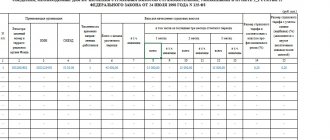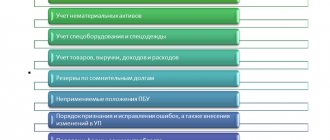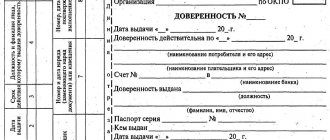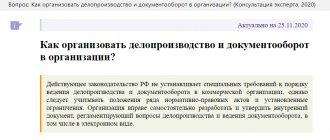Application of PBU 2/2008 in accounting
Accounting Regulations “Accounting for Construction Contracts” (PBU 2/2008), approved. by order of the Ministry of Finance of the Russian Federation dated October 24, 2008 No. 116n, applied since 2009.
Who should apply PBU 2/2008
PBU 2/2008 is used only by contractors under contracts related to construction, restoration (repair, modernization, reconstruction) or liquidation of real estate (buildings, structures, ships).
Small businesses may not apply the specified PBU if they make an appropriate entry about this in their accounting policies.
PBU 2/2008 applies to contracts that meet the following criteria:
1) by type of agreement:
— construction contract;
— agreement for the provision of services (contract) in the field of architecture, design, engineering surveys, etc.;
2) according to the terms of the contract:
— long-term contract (more than 1 year);
— the start and end dates of the contract fall on different years.
Accounting unit for accounting
The object of analytical accounting (accounting unit) on balance sheet accounts 20 and 90 is the contract. At the same time, p.p. 4-6 PBU 2/2008 establishes the following cases of separation, merger and division of executable contracts for the purpose of forming an accounting unit (accounting object):
1) one contract for a complex of objects is divided by object - each object is considered an agreement (for accounting) if the following conditions are simultaneously met:
a) technical documentation is available for each facility;
b) income and expenses are reliably determined for each object;
2) two or more contracts (with one or more customers) are combined into one contract (for accounting) if the following conditions are simultaneously met:
a) there is one project (with a rate of return for the project as a whole);
b) contracts are executed simultaneously or sequentially;
3) an additional construction project (additional work) is allocated as a separate contract if one of the conditions is met:
a) significant difference in design, technological or functional characteristics;
b) (or) the price is determined on the basis of an additional estimate agreed upon by the parties.
Income under the contract
Income under a construction contract is reflected as part of income from ordinary activities in accordance with PBU 9/99 (subaccount 90-1). In this case, sales revenue for each contract (Debit 62 Credit 90-1) is recognized taking into account the so-called “adjustments”. Adjustments include contract variances, claims, and incentive payments.
The procedure for determining sales revenue can be represented as a formula:
VD = CD + O + P + PP ,
where VD is revenue from sales under the contract; CD - contract price; O – deviations; P- claims; PP - incentive payments.
Deviations are changes in the cost of work agreed upon by the parties that may arise as a result of:
a) replacement of materials (cheaper or more expensive);
b) performing additional work not provided for in the technical documentation;
c) performing more complex work than provided for in the technical documentation;
d) exclusion (failure to perform) part of the work previously included in the scope of work under the contract.
Claims are demands that the contractor makes to the customer or other persons specified in the contract:
a) on reimbursement of costs that the contractor incurred due to the actions (inaction) of the customer or third parties;
b) compensation for reasonable expenses incurred by the contractor due to defects in the technical documentation;
c) on reimbursement of costs that the contractor incurred as a result of the customer’s failure to perform the functions provided for in the contract (providing connection points, power supply to the construction site, title temporary buildings and structures, etc.).
Incentive payments are amounts that are paid to the contractor additionally above the estimate when certain conditions specified in the contract are met (for example, for reducing construction time, etc.).
Note! Adjustments are included in revenue provided that they are provided for in the contract.
Claims and incentive payments are reflected when two conditions are met simultaneously:
1) there is confidence that the amounts will be recognized by the customer;
2) their amount can be reliably determined.
If at the reporting date there are doubts about the receipt of deviations, claims and incentive payments that were previously included in sales revenue, then they are recognized as expenses for ordinary activities of the reporting period. Revenue recognized in previous reporting periods is not adjusted!
Contract costs
They are recognized as expenses for ordinary activities in accordance with PBU 10/99 (balance sheet accounts 20, 25, 26).
The composition of expenses under the contract is determined by the following formula:
RD = PR + KR + P,
where RD – costs under the contract, PR – direct costs under the contract, KR – indirect costs under the contract, P – other costs under the contract.
Direct expenses under the contract are expenses that are directly related to the execution of the contract (are reflected in balance sheet account 20 “Main production”).
Please note that direct costs under the contract include anticipated costs.
Foreseen expenses are expected unavoidable expenses. They are included in direct expenses in the manner prescribed in the accounting policies:
1) as they arise;
2) (or) in the form of reserves to cover anticipated expenses.
Note! Foreseen expenses are recognized as direct expenses, provided that their reimbursement by the customer is expressly provided for in the contract, namely:
— types of anticipated expenses that the customer is willing to reimburse;
— procedure and conditions for compensation;
- the exact amount to be reimbursed.
PBU 2/2008 names the following types of anticipated expenses:
— elimination of deficiencies in projects or construction and installation works (for example, deficiencies in construction and installation work may be left by previous contractors or subcontractors);
— disassembly of equipment due to defects in anti-corrosion protection;
- expenses for warranty repairs and warranty service of the constructed facility (reservation of such expenses must be provided for in the estimate as a percentage of the estimated cost of construction and installation work, or included in the contract price).
Indirect costs under the contract are part of the organization’s total costs for the execution of construction contracts, attributable to a specific contract (recorded on balance sheet account 25 “General production expenses” and distributed at the end of the month according to the contracts being executed: Debit 20 Credit 25). The procedure for distributing indirect costs is established in the accounting policies. PBU 2/2008 offers one of the options for such distribution - using estimated norms and prices. Other options: in proportion to direct costs, or wages of main workers, or material costs for each contract in the total amount of corresponding costs for all contracts executed in a calendar month.
Other expenses under the contract are those general business expenses that, under the terms of the contract, are reimbursed by the customer (are reflected on balance sheet account 26 “General business expenses” and are debited to account 20 only by items and in the amounts provided for by a specific contract). Other expenses include separate expenses for managing a construction organization, conducting R&D, etc. Please note: reimbursement by the customer of other expenses must be specifically provided for in the contract.
The procedure set out in PBU 2/2008 for writing off other expenses under the contract (Debit 20 Credit 26) does not prevent the construction organization from establishing in its accounting policies a method for including general business expenses at the end of each month in full in the cost of sales (Debit 90-2 Credit 26). PBU 2/2008 deals only with specific types of expenses that are reimbursed by the customer under a specific contract and, therefore, these expenses are directly related to the receipt of income under such a contract.
A separate group includes expenses incurred before signing the contract (development of a feasibility study, preparation of an insurance contract for the risks of construction work, etc.). Such expenses are reflected as deferred expenses (in the debit of balance sheet account 97) and are written off in the following order:
1) in expenses under the contract (Dt 20 Kt 97) - if the contract was signed in the same reporting period in which the expenses were incurred;
2) as part of other expenses (Dt 91-2 Kt 97) - if the agreement was not signed in the reporting period.
Please note, “Other expenses under the contract” is a term introduced by PBU 2/2008. From the point of view of PBU 10/99, these are expenses for ordinary activities, which are reflected in balance sheet account 26.
In general, “Other expenses” are expenses that are not associated with normal activities. They are reflected in subaccount 91-2.
Income received from the execution of non-construction contracts
Such income includes:
1) income from the rental of construction machinery, equipment, formwork, construction sheds, etc.;
2) income from the sale of excess building materials, parts and structures;
3) other similar income.
In its accounting policies, the organization must choose a way to reflect such income:
1) accounted for as other income in subaccount 91-1 (Debit 62, 76 Credit 91-1);
2) (or) reduce direct expenses under the contract by the amount of income received (Debit 62, 76 Credit 20).
Determination of the financial result under the contract
The financial result under the contract (profit or loss) is determined by correlating the revenue under the contract and the expenses corresponding to this revenue. For this purpose, revenue and expenses are recognized in accounting using the “as ready” method, namely: based on the degree of completion of work under the contract as of the reporting date.
The method for determining the degree of completion of work under the contract is established in the accounting policies. PBU 2/2008 offers a choice of 2 methods:
1) by the share of the volume of work completed as of the reporting date in the total volume of work under the contract;
2) by the share of expenses incurred as of the reporting date in the estimated amount of total expenses under the contract.
In this case, both natural and cost indicators can be taken as the basis for determining the share. Thus, in the accounting policy you should not only choose a method for determining the degree of completion of work, but also prescribe an algorithm for applying the selected method.
Very important: the financial result of the reporting period is determined taking into account the revenue and expenses under the contract recognized in previous reporting periods under this contract.
Example
Using an example, we will consider the use of methods for determining the degree of completion of work in value terms.
Expected revenue under the contract is RUB 3,200,000.
Completed as of the reporting date – RUB 2,000,000, including:
— in previous reporting periods (revenue recognized) – RUB 1,200,000,
- in the current reporting period - 800,000 rubles.
Actual expenses as of the reporting date – RUB 1,500,000, including:
— in previous reporting periods – RUB 950,000,
- in the current reporting period - 550,000 rubles.
Costs according to the estimate, total – 2,700,000, including:
— for completed work – RUB 1,700,000,
- for the remaining work - 1,000,000 rubles.
The procedure for determining the degree of completion of work for different options is presented in Table 1, the algorithm for calculating the financial result is in Table 2.
Table 1
| By income (volumes completed in value terms) | By expenses |
| 2,000,000 / 3,200,000 x 100% = 62.5% | 1,500,000 : (1,500,000 + 1,000,000) x 100% = 60% |
table 2
| Index | By income | By expenses |
| Revenue, total | 2 000 000 (3,200,000 x 62.5%) | 1 920 000 (3,200,000 x 60%) |
| incl. revenue of the reporting period | 800 000 (2 000 000 – 1 200 000) | 720 000 (2 000 000 – 1 920 000) |
| Expenses, total | 1 562 500 (2,500,000 x 62.5%) | 1 500 000 (2,500,000 x 60%) |
| incl. reporting period | 612 500 (1 562 500 – 950 000) | 550 000 (1 500 000 – 950 000) |
| Financial result, total | 437 500 (2 000 000 – 1 562 500) | 420 000 (1 920 000 – 1 500 000) |
| incl. reporting period | 187 500 (800 000 – 612 500) | 170 000 (720 000 – 550 000) |
Conditions for using the “as ready” method
The “as ready” method is applied provided that the financial result under the contract as of the reporting date can be reliably determined.
The conditions for reliably determining the financial result are:
1) confidence in receiving economic benefits (income) from the contract;
2) the ability to identify and reliably determine expenses incurred under the contract.
PBU 2/2008 also establishes additional conditions for a contract with a fixed price (or a fixed price per unit of work) and with a mixed procedure for determining the price:
3) the ability to determine:
— the total amount of revenue under the contract;
— expenses necessary to complete the work under the contract;
— degree of completion of work as of the reporting date;
4) commensurability of the actual amount of expenses with previously made estimates of these expenses.
Method of equalizing revenue and expenses
The method of determining the financial result “revenue of the reporting period is equal to the expenses incurred in this reporting period” is applied only in the case when:
a) a reliable determination of the financial result in a given reporting period is impossible;
b) (i) there is confidence that the costs incurred will be reimbursed by the customer.
This method of determining the financial result can be used at the initial stage of execution of the contract, when its terms are clarified. When eliminating uncertainty, the “as ready” method is used (from the reporting period in which the uncertainty is eliminated).
If there is no certainty that the costs will be reimbursed by the customer, then only costs (without revenue) are recognized as expenses for ordinary activities of the reporting period (balance sheet account 20).
In cases where documented expenses are not reimbursed by the customer, the expected loss is recognized in the corresponding reporting period.
The expected loss is the identified (expected) excess of the amount of expenses over the amount of revenue under the contract.
Accrued revenue not presented for payment
Revenue under the contract, recognized using the “as ready” method, is accounted for until the work (stage) is fully completed as a separate asset - “accrued revenue not presented for payment.” This means that revenue should be reflected in accounting and reporting, regardless of whether the acceptance certificates for the work performed are drawn up or not. To reflect such revenue, you can use subaccount 46-2.
Accrued revenue not presented for payment is reflected in accounting by the following entries:
1. Before issuing an invoice for payment to the customer:
Debit 46-2 Credit 90-1 - revenue accrued under the agreement;
Debit 90-3 Credit 76, subaccount “Deferred VAT” - deferred VAT is calculated on revenue that has not been presented (the contractor does not have an obligation to pay VAT due to the absence of a work completion certificate);
2. When issuing interim invoices for payment to the customer:
Debit 62 Credit 46-2 - for the amount of revenue that is included in the invoice for payment;
3. Upon completion of the work and delivery of its results to the customer:
Debit 62 Credit 46-2 - for the amount of revenue that was not presented to the customer in invoices for payment;
Debit 76, subaccount “Deferred VAT” Credit 68, subaccount “Calculations with the budget for VAT” - deferred VAT is accrued for payment to the budget.
rule is established for the interim account : if the contract provides for incomplete payment of the invoice for work performed until certain conditions are met or deficiencies are eliminated, then such an amount is allocated in the interim account (clause 26 of PBU 2/2008).
Example
The beginning of the contract is December 2010, the end is January 2011. The work is handed over to the customer after complete completion (at the end of the contract).
The total cost of work under the contract is RUB 3,540,000, incl. VAT – 540,000 rub.
Costs according to the estimate – RUB 2,450,000, incl. The estimated cost of work in December is 1,000,000 rubles, in January – 1,450,000 rubles.
Actual expenses in December amounted to 870,000 rubles, in January – 1,400,000 rubles.
Revenue and expenses under the contract are determined using the “as ready” method. The degree of completion of work is determined by the share of expenses incurred as of the reporting date.
Degree of completion of work as of December 31, 2010: RUB 870,000. : (RUB 870,000 + RUB 1,450,000) x 100% = 37.5%
Revenue (including VAT) under the contract in December: RUB 3,540,000. x 37.5% = 1,327,500 rub. (including VAT – RUB 202,500).
For the accounting entries for this example, see Table 3.
Table 3
| Operation | Debit | Credit | Sum |
| December | |||
| Revenue accrued for December | 46-2 | 90-1 | 1 327 500 |
| Deferred VAT accrued on revenue | 90-3 | 76nds | 202 500 |
| The cost of work performed is reflected | 90-2 | 20 | 870 000 |
| January | |||
| Revenue accrued for January | 62 | 90-1 | 2 212 500 |
| Revenue not reported for payment is included in accounts receivable | 62 | 46-2 | 1 327 500 |
| VAT accrued for payment to the budget | 90-3 | 68-VAT | 337 500 |
| 76nds | 68-VAT | 202 500 | |
| The cost of work performed is reflected | 90-2 | 20 | 1 400 000 |
Accounting policy of a construction organization
The accounting policies of the contracting construction organization must disclose the following methods and methods of accounting in connection with the application of PBU 2/2008:
1) methods for distributing indirect costs between contracts (clause 13 of PBU 2/2008);
2) the procedure for reflecting anticipated expenses: as they arise or by creating a reserve. In cases of forming a reserve to cover anticipated expenses, the procedure for forming such a reserve (clause 12 of PBU 2/2008);
3) the procedure for reflecting income not related to the execution of construction contracts: as part of other income or for an increase in direct expenses (clause 12 of PBU 2/2008);
4) the method for determining the degree of completion of work under the contract (clause 20 of PBU 2/2008);
5) the procedure for using subaccount 46-2 (or other account/subaccount) to reflect “accrued revenue not presented for payment” and debt to customers (clauses 26, 29 PBU 2/2008);
6) the procedure for reflecting deferred VAT on revenue accrued but not presented for payment (76, subaccount “Deferred VAT”).
How to choose an accounting method
The new edition of PBU 1/2008 “Accounting Policy of an Organization” more clearly defines the rules by which a company must choose the method of accounting for a particular item.
As before, you need to use the method established by federal accounting standards. If the standards allow several alternative methods, the organization still has the right to choose one of them. But if there is not a single method in federal standards, in the general case you need to act according to the updated algorithm. Namely, to develop your own method, consistently applying the following documents: first, international financial reporting standards (IFRS), then federal and industry standards on similar or related issues, and finally, recommendations in the field of accounting. This is stated in the newly created paragraph 7.1 of PBU 1/2008. In the previous edition, such a sequence was not fixed.
When can you deviate from federal standards?
It is understood that the application of federal standards and the development of own standards provides a reliable picture of the financial condition of the organization. But in exceptional cases, this can, on the contrary, distort the true state of affairs. According to the newly created clause 7.3 of PBU 1/2008, a company that finds itself in such a situation has the right to deviate from the standards. But not always, but when the following conditions are met:
- circumstances have been identified due to which it is impossible to reliably reflect the financial condition, financial results and cash flow of the organization in the accounting statements;
- an alternative method of accounting is possible to eliminate these circumstances;
- the alternative method of accounting will not lead to the emergence of other circumstances that would distort the company’s accounting records;
- The organization discloses the following information in its reporting; the name and brief description of the federal standard from which it deviated; circumstances that distorted the financial picture, and the content of the alternative method. Plus, the company must present the value of each accounting indicator in such a form as if it did not deviate from the standards, and indicate the amount of adjustment for each indicator.
Get a free sample accounting policy and do accounting in a web service for small LLCs and individual entrepreneurs
Innovation for those who generate consolidated reporting
A number of organizations are required to keep records and prepare consolidated financial statements in accordance with IFRS. These, in particular, include all companies whose securities are admitted to trading on stock exchanges and (or) other organizers of trading on the securities market (Part 1, Article 1 of Federal Law No. 208-FZ of July 27, 2010).
In the updated version of paragraph 7 of PBU 1/2008, a rule has appeared according to which such organizations in their accounting policies have the right to take into account not only federal standards, but also IFRS. And if any accounting method established by the federal standard is contrary to the requirements of IFRS, this method need not be applied. But at the same time, the company must describe this method, disclose the relevant IFRS requirement and explain how they do not correspond to each other.
The concept of irrelevant information has appeared
PBU 1/2008 introduced a new concept - non-essential information. This is information on the presence, absence or method of reflection of which economic decisions do not depend. Each company must decide for itself what information is immaterial based on its size and nature.
The newly created paragraph 7.4 of PBU 1/2008 contains instructions for the case when the application of federal standards and the development of their own standards leads to the formation of insignificant information. In this situation, the accountant is allowed to choose accounting methods, guided only by the requirement of rationality, that is, without the use of standards. Please note: this rule applies not only to those who are allowed to conduct accounting in a simplified way, but also to all other organizations.
When to disclose information about a regulatory legal act that has not entered into force
The amendments affected paragraph 23 of PBU 1/2008, dedicated to regulatory legal acts (NLA) that have not entered into force. Previously, it said that the company must disclose in its reporting the fact of non-application of a legal regulation that has not entered into force, and also assess the impact of this act on the indicators of the period in which its application begins. This rule has now been canceled. Instead, another appeared, according to which an organization that began to voluntarily apply the regulatory legal acts before it came into force is obliged to disclose this fact in its accounting reports.
There is no need to write an explanatory note
In the “old” edition of PBU 1/2008 there was a mention of an explanatory note. It was supposed to be submitted as part of the accounting reports and disclose in it the essential methods of accounting. In addition, the explanatory note should have announced changes in accounting policies for the year following the reporting year.
Currently, the concept of “explanatory note” is not used in PBU 1/2008. As for information about changes in accounting policies and significant methods of accounting, they still need to be disclosed. But not in the explanatory note, but in the financial statements. Apparently, it is understood that this information needs to be disclosed in the explanations that are part of the accounting reports. Explanations can be provided in the form of a table or in text form (clause 4 of the order of the Ministry of Finance of Russia dated July 2, 2010 No. 66n).









